Get free scan and check if your device is infected.
Remove it nowTo use full-featured product, you have to purchase a license for Combo Cleaner. Seven days free trial available. Combo Cleaner is owned and operated by RCS LT, the parent company of PCRisk.com.
What kind of malware is Lumma?
Lumma is a piece of malicious software categorized as a stealer. Malware within this category is designed to steal sensitive data. These programs are capable of exfiltrating data from infected systems and the applications installed onto them. The threats posed by stealers can be extensive and depend on the program's capabilities, the information available on victims' devices, and the cyber criminals' aims.
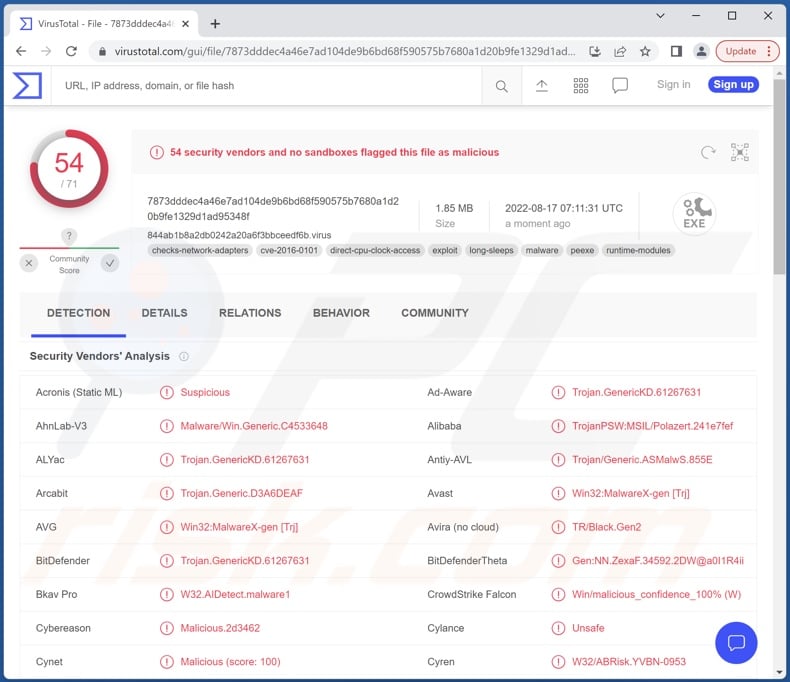
Lumma malware overview
Lumma's behavior is similar to that of the Mars, Arkei, and Vidar stealers. Stealer-type malware can exfiltrate both device/system and personal data. The latter entails downloading various files (e.g., databases, images, documents, videos, etc.) from the compromised system.
These malicious programs are typically able to extract information from browsers, which could include: browsing and search engine data, autofills, usernames/passwords, personally identifiable details, credit card numbers, and so forth.
Stealers often target various accounts like emails, social media, social networking, messengers, gaming-related software, online banking, e-commerce, cryptocurrency wallets, FTPs, password managers, authentication software, VPNs, and many others.
Depending on the sensitivity of the stolen data, cyber criminals could potentially use it for blackmail purposes (demand ransoms under threat of publication).
The criminals can abuse communication/social platforms to steal the victim's identity and ask their contacts/friends for loans or to spread malware (by sharing malicious files/links). Finance-related accounts may be used to make fraudulent transactions or online purchases.
In summary, the presence of stealers like Lumma on devices can result in severe privacy issues, significant financial losses, and identity theft. If you suspect that your system is infected with Lumma (or other malware), we highly recommend using an anti-virus to remove it without delay.
| Name | Lumma malware |
| Threat Type | Trojan, password-stealing virus, banking malware, spyware. |
| Detection Names | Avast (Win32:MalwareX-gen [Trj]), Combo Cleaner (Trojan.GenericKD.61267631), ESET-NOD32 (A Variant Of Win32/PSW.Agent.OGR), Kaspersky (HEUR:Trojan.Win32.Generic), Microsoft (PWS:MSIL/Polazert.GA!MTB), Full List Of Detections (VirusTotal) |
| Symptoms | Trojans are designed to stealthily infiltrate the victim's computer and remain silent, and thus no particular symptoms are clearly visible on an infected machine. |
| Distribution methods | Infected email attachments, malicious online advertisements, social engineering, software 'cracks'. |
| Damage | Stolen passwords and banking information, identity theft, the victim's computer added to a botnet. |
| Malware Removal (Windows) |
To eliminate possible malware infections, scan your computer with legitimate antivirus software. Our security researchers recommend using Combo Cleaner. Download Combo CleanerTo use full-featured product, you have to purchase a license for Combo Cleaner. 7 days free trial available. Combo Cleaner is owned and operated by RCS LT, the parent company of PCRisk.com. |
Stealer-type malware examples
We have analyzed thousands of malware samples; Erbium, Nitro Stealer, Luca, and NoMercy are merely a few of our newest finds within the stealer category.
Malicious software can have varied abilities in different combinations. However, regardless of how malware operates, its presence on a system endangers device integrity and user safety. Therefore, all threats must be eliminated immediately upon detection.
How did Lumma infiltrate my computer?
Malware is proliferated using phishing and social engineering techniques. Malicious software is typically presented as or bundled with ordinary software/media.
Virulent files can be Microsoft Office and PDF documents, archives (RAR, ZIP, etc.), executables (.exe, .run, etc.), JavaScript, and so forth. When a malicious is executed, run, or otherwise opened - the infection chain is initiated.
The most common distribution methods include: drive-by (stealthy/deceptive) downloads, online scams, spam emails and messages, dubious download channels (e.g., unofficial and freeware websites, Peer-to-Peer sharing networks, etc.), illegal program activation ("cracking") tools, and fake updates.
How to avoid installation of malware?
We strongly recommend always using official and verified download sources. Furthermore, all programs must be activated and updated using functions/tools provided by genuine developers, as illegal activation tools ("cracks") and fake updaters may contain malware.
We advise against opening the attachments and links present in suspicious/irrelevant emails and messages since that can lead to a system infection.
It is essential to have a reputable anti-virus installed and kept up-to-date. This software must be used to run regular system scans and to remove detected threats and issues. If you believe that your computer is already infected, we recommend running a scan with Combo Cleaner Antivirus for Windows to automatically eliminate infiltrated malware.
Screenshot of Lumma stealer's admin panel log-in:
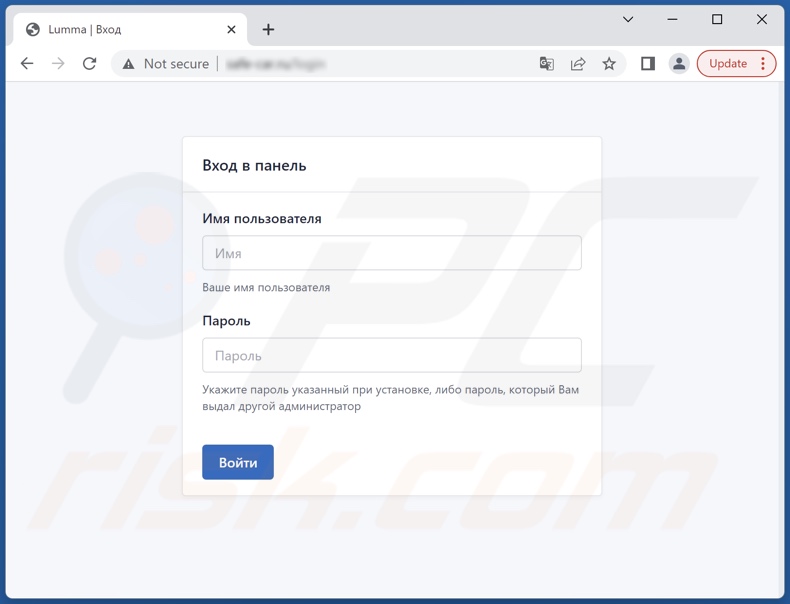
Screenshot of a fake VLC Player download website (videolan-web[.]org) used to spread Lumma stealer:
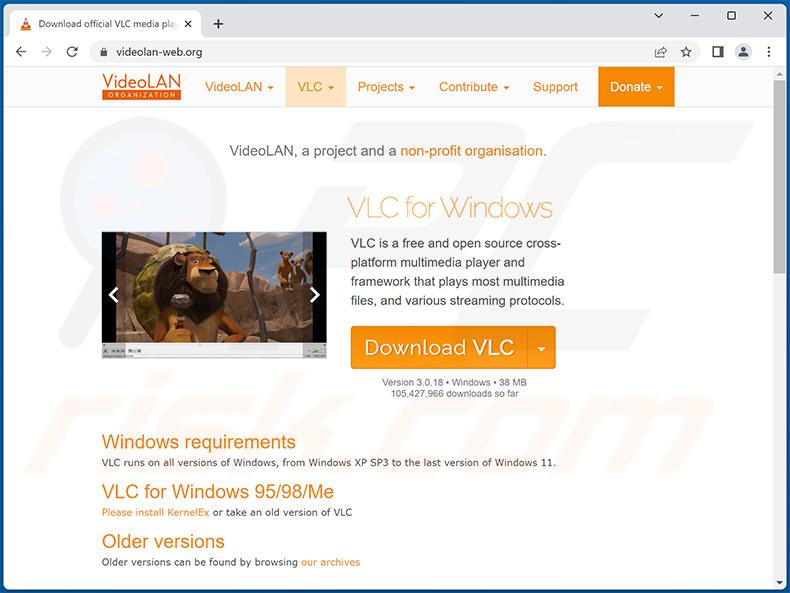
Update March 1, 2023 – new Lumma stealer proliferation method has been discovered. Cyber criminals behind this malware have used spam emails to target YouTubers.
In February of this year, a phishing email was sent to a South Korean voice actor YouTuber. The email was disguised as a business-related missive from Bandai Namco – a Japanese production enterprise and entertainment conglomerate. The fake letter concerned a partnership/sponsorship with the YouTuber, who would be promoting a new video game based on the bestselling manga/anime One Piece.
Through the phishing email, the cyber criminals were successful in infecting the victim's system and stealing their YouTube account. Fortunately, the account was later recovered by its rightful owner.
To elaborate on the infection chain, the spam letter contained a Dropbox link via which an archive file (titled "One Piece Odyssey Youtube Deal.zip") and a video file (serving as bait) were downloaded. The former was disguised as a PDF document and – upon its contents' execution – downloaded a malicious program. The malware then infiltrated Pure Crypter into the system, and this loader injected Lumma stealer into the device.
Screenshot of the spam email used to spread Lumma stealer:
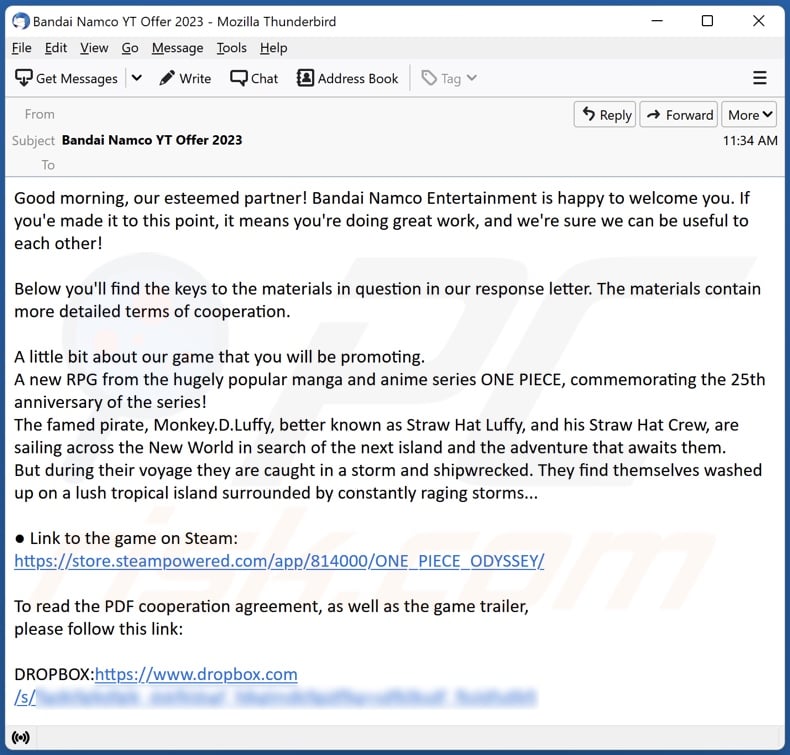
Text presented in this email letter:
Subject: Bandai Namco YT Offer 2023
Good morning, our esteemed partner! Bandai Namco Entertainment is happy to welcome you. If you'e made it to this point, it means you're doing great work, and we're sure we can be useful to each other!
Below you'll find the keys to the materials in question in our response letter. The materials contain more detailed terms of cooperation.
A little bit about our game that you will be promoting.
A new RPG from the hugely popular manga and anime series ONE PIECE, commemorating the 25th anniversary of the series!
The famed pirate, Monkey.D.Luffy, better known as Straw Hat Luffy, and his Straw Hat Crew, are sailing across the New World in search of the next island and the adventure that awaits them.
But during their voyage they are caught in a storm and shipwrecked. They find themselves washed up on a lush tropical island surrounded by constantly raging storms...
Link to the game on Steam:
-
To read the PDF cooperation agreement, as well as the game trailer,
please follow this link:
DROPBOX:-
Update May 3, 2023 - cyber criminals have recently started a new campaign to spread Lumma stealer. They use YouTube videos containing a download link for either software cracks or already activated software.
Examples of YouTube videos used to spread Lumma stealer:
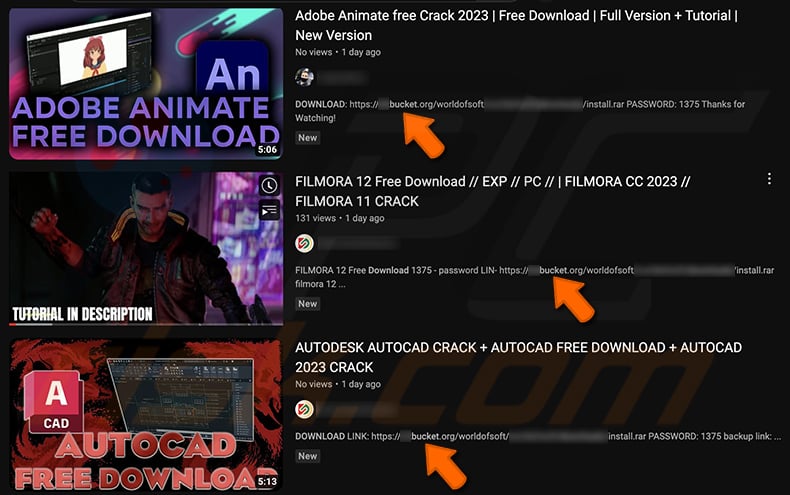
Screenshot of a fake Mozilla Firefox update website spreading Lumma stealer:
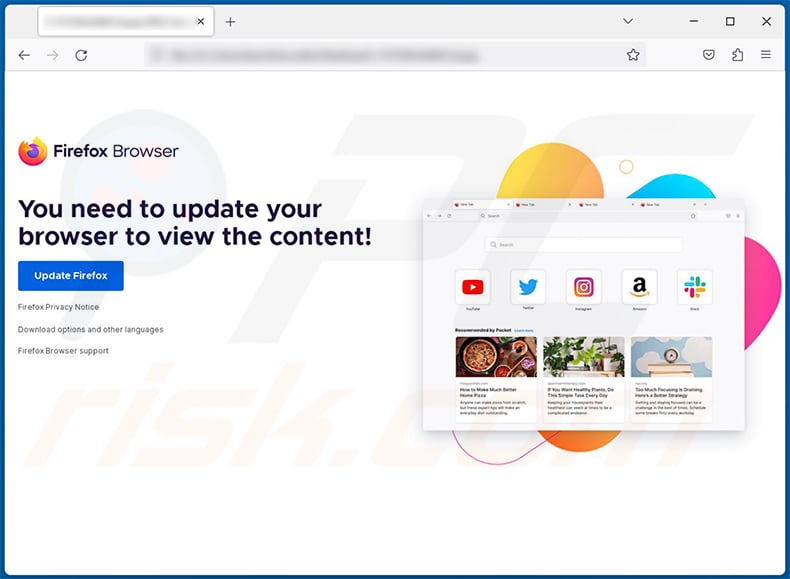
Update November 30, 2023 - it has been uncovered that threat actors are utilizing Discord, a widely used chat platform for online gamers and content creators, to distribute the Lumma stealer. The malicious actors leverage Discord's content delivery network (CDN) and application programming interface (API) to host Lumma, create controlling bots, and communicate with the malware remotely.
These bots, in turn, transmit stolen data to private Discord servers or channels. The operators employ deceptive tactics, such as using random Discord accounts or compromised ones, to trick victims into downloading the malware through offers like Discord Nitro boosts.
Notably, the malware has evolved to load other files, possibly leading to additional infections, and its operators claim the ability to detect and filter out useless infections using artificial intelligence.
Screenshot of a fake Grand Theft Auto (GTA) 6 download website (alphagta6[.]com) spreading Lumma stealer:
![Fake Grand Theft Auto (GTA) 6 download website (alphagta6[.]com) spreading Lumma stealer](/images/stories/screenshots202312/lumma-amos-update-2023-12-20-deceptive-website.jpg)
Screenshot of a Twitter (X) post promoting this site:
![Twitter post promoting a fake Grand Theft Auto (GTA) 6 download website (alphagta6[.]com) spreading Lumma stealer](/images/stories/screenshots202312/lumma-amos-update-2023-12-20-twitter-post.jpg)
Fake Bitdefender download website (bitdefender-app[.]com) spreading Lumma stealer:
![Fake Bitdefender download website (bitdefender-app[.]com) used to spread Lumma stealer](/images/stories/screenshots202404/lumma-stealer-update-2024-04-24-fake-bitdefender-website.jpg)
Update August 30, 2024 – yet another distribution method has been discovered in use to spread the Lumma stealer. The malware is proliferated via malicious links dropped in comments on public GitHub repositories. The malware was delivered in password-protected archive files hosted on MediaFire. One noteworthy aspect of the comments is how poorly they are written. However, it must be stressed that cyber criminals could utilize spam comments with better English and other file formats or file-hosting services.
Update September 5, 2024 – threat actors have been observed targeting OnlyFans hackers with a fake hacking tool, which instead installs the Lummac stealer malware. The hackers, seeking to exploit OnlyFans accounts, fall victim themselves as Lummac infects their systems. The campaign also targets users interested in hacking Disney+, Instagram, and other platforms.
Update September 19, 2024 - Cyber criminals are distributing Lumma stealer using the Verify You Are A Human (CAPTCHA) scam technique. User receive an email regarding Github's vulnerability issues which contains a link to a malicious site (github-scanner[.]com) functioning as the Verify You Are A Human (CAPTCHA) scam.
Example of an email:
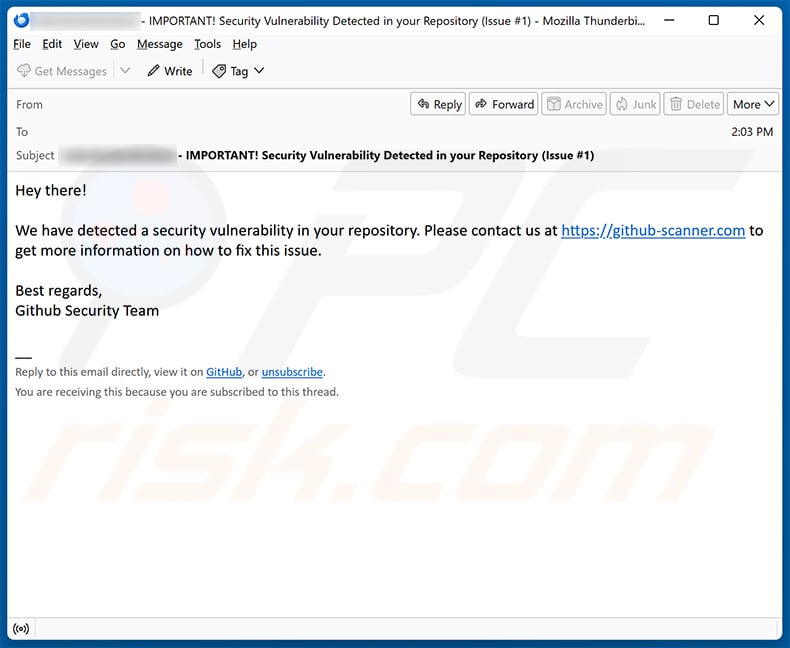
Text presented within:
Subject: IMPORTANT! Security Vulnerability Detected in your Repository (Issue #1)
Hey there!
We have detected a security vulnerability in your repository. Please contact us at hxxps://github-scanner[.]com to get more information on how to fix this issue.
Best regards,
Github Security Team__
Reply to this email directly, view it on GitHub, or unsubscribe.
You are receiving this because you are subscribed to this thread.
Appearance of the website github-scanner[.]com website spreading Lumma stealer:
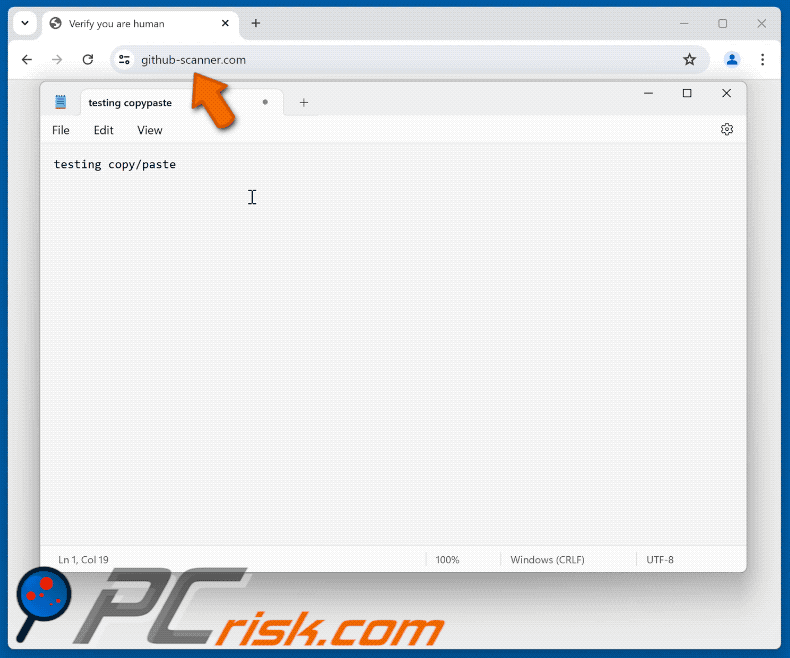
Example of a cracked software distribution website spreading Lumma stealer:
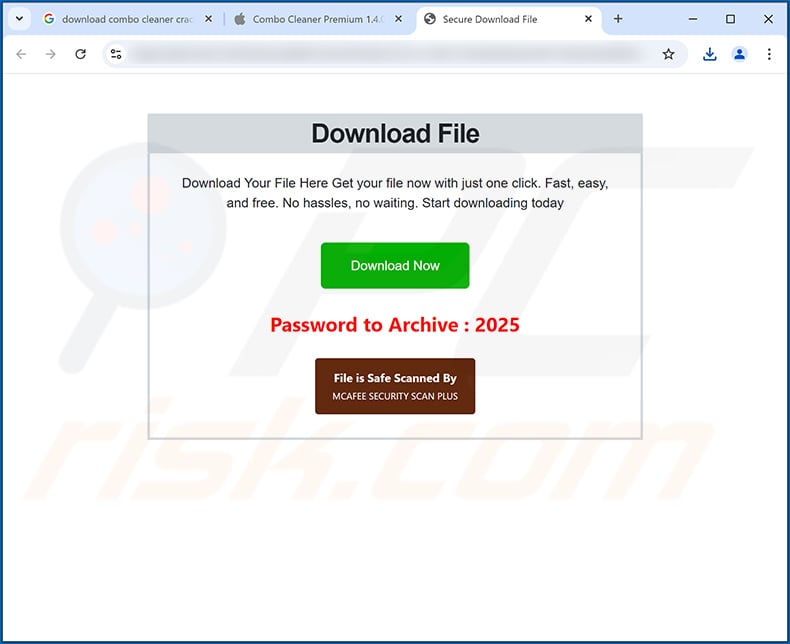
Update November 18, 2024 - Threat actors have created fake websites impersonating the AI editor EditPro to distribute malware. These sites are promoted through ads and fake deepfake videos on X (Twitter). Clicking "Get Now" downloads malware disguised as the EditProAI app, targeting Windows and macOS users. The Windows malware even uses a stolen code signing certificate to appear legitimate.
Update December 17, 2024 - Threat actors were observed spreading the stealer through fake CAPTCHA verification pages that trick users into running malicious PowerShell commands. The campaign uses the Monetag ad network, primarily targeting sites offering pirated software and illegal streaming services.
This attack is a more dangerous variant of ClickFix tactics, where victims are tricked into executing harmful commands. The attack begins with a pop-up ad leading to a fake CAPTCHA page, which then silently copies a malicious PowerShell command to the victim's clipboard.
The page instructs users to paste and run the command in the Windows Run dialog, triggering the download and execution of Lumma Stealer on their devices.
Update January 24, 2025 - Cyber criminals have been recently spreading Lumma stealer through hundreds of fake Reddit and WeTransfer websites. The fake Reddit pages contain fake discussion threads with replies providing a download links for various tools. The provided links lead to fake WeTransfer websites containing Lumma stealer.
Screenshot of a fake Reddit website (source: Bleeping Computer):
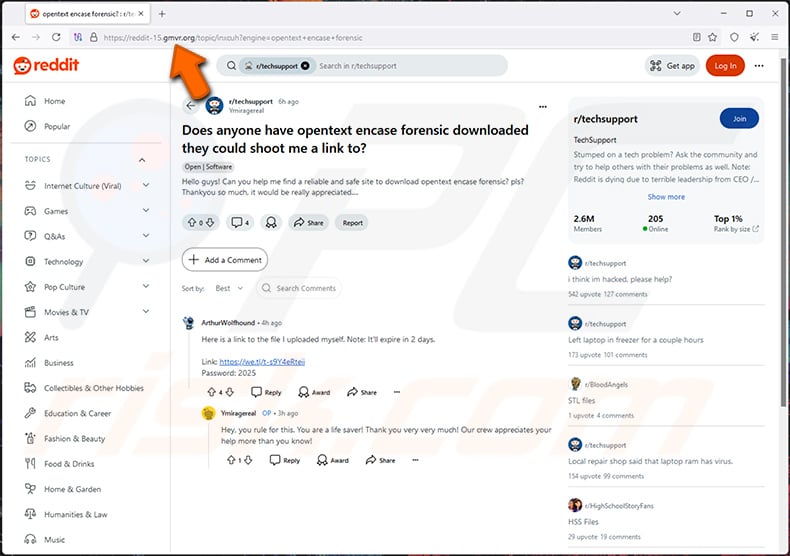
Screenshot of a fake WeTransfer website (source: Bleeping Computer):
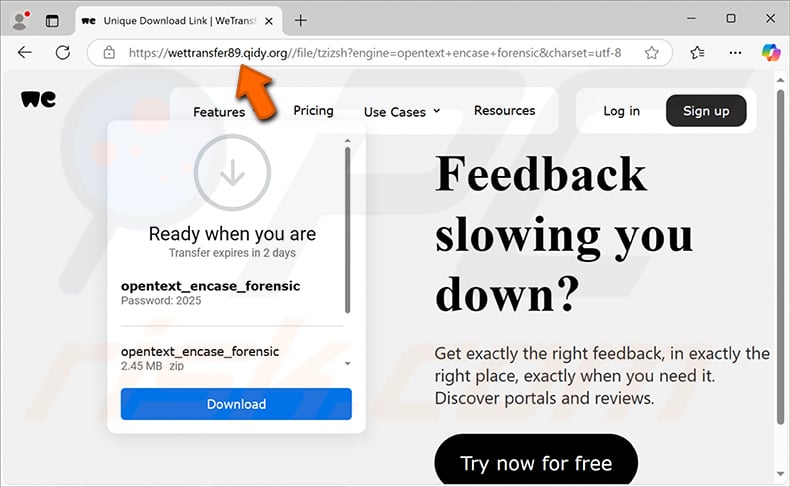
Update January 28, 2025 – Lumma stealer was observed being proliferated through a ClickFix scam using a CAPTCHA verification lure.
Screenshot of a ClickFix scam spreading the Lumma stealer:
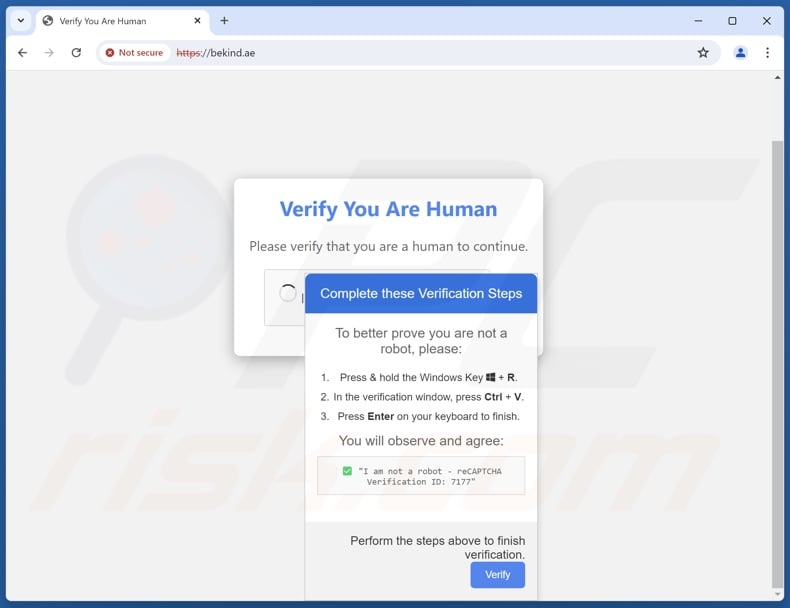
Screenshot of a fake CCleaner download website spreading Lumma stealer:
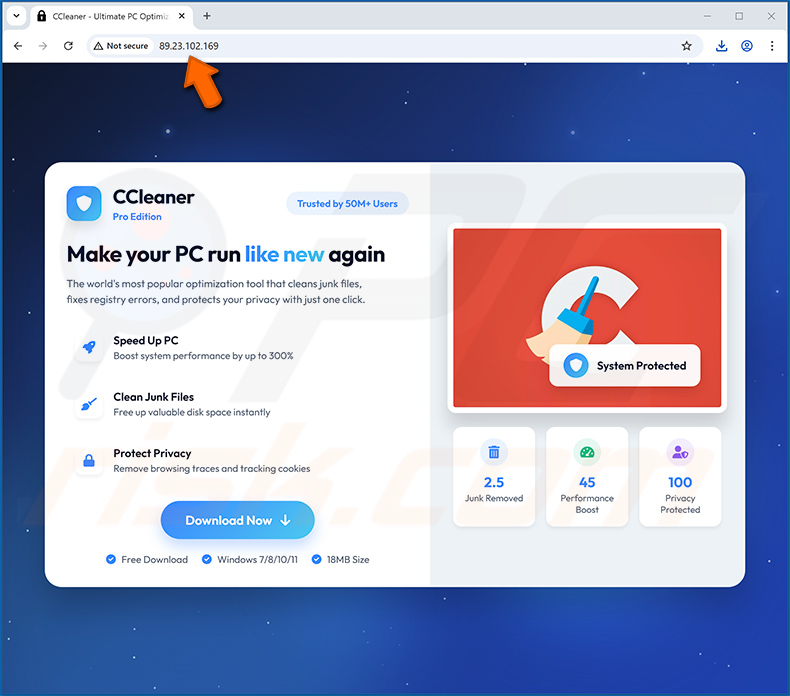
Update May 22, 2025 – significant disruptions have been caused to the Lumma stealer's MaaS (Malware-as-a-Service) infrastructure. This operation was carried out by multiple law enforcement authorities and tech companies.
Lumma sale spots were disrupted by the United States Department of Justice (DOJ). The infrastructure in Europe and Japan was handled by the European Cybercrime Centre (EC3) and Japan's Cybercrime Control Center (JC3), respectively. The Microsoft Corporation seized over 2,300 domains used in Lumma's online infrastructure. The joint effort also involved the Orrick, Herrington & Sutcliffe law firm; GMO Internet Group, Inc.; ESET, s.r.o.; BitSight Technologies, Inc.; and other entities.
The outcome of this MaaS disruption will cause the threat actors behind Lumma major operational disturbances and expenditures. The stealer's operators will be unable to access their control panel, exfiltrated data, and the Internet infrastructure for managing the stolen information.
Update July 25, 2025 – Lumma Stealer was disrupted in May 2025 through a coordinated takedown by law enforcement and cybersecurity firms. However, the malware has since resurfaced with enhanced techniques to evade detection. Previously, its operators used Cloudflare to conceal their malicious domains and avoid being tracked.
Now, they have shifted to various other providers, especially Russian cloud and data center services like Selectel. One of the most common and effective ways Lumma Stealer spreads is through fake tools such as cracks and key generators (keygens). It also continues to be distributed via ClickFix, social media platforms, and GitHub campaigns.
Update December 18, 2025 – Lumma Stealer, which usage slowed down after its operators were exposed, has become active again since late October. The malware now utilizes browser fingerprinting to collect system, browser, and hardware information, enabling attackers to plan their attack steps and evade detection.
Instant automatic malware removal:
Manual threat removal might be a lengthy and complicated process that requires advanced IT skills. Combo Cleaner is a professional automatic malware removal tool that is recommended to get rid of malware. Download it by clicking the button below:
DOWNLOAD Combo CleanerBy downloading any software listed on this website you agree to our Privacy Policy and Terms of Use. To use full-featured product, you have to purchase a license for Combo Cleaner. 7 days free trial available. Combo Cleaner is owned and operated by RCS LT, the parent company of PCRisk.com.
Quick menu:
How to remove malware manually?
Manual malware removal is a complicated task - usually it is best to allow antivirus or anti-malware programs to do this automatically. To remove this malware we recommend using Combo Cleaner Antivirus for Windows.
If you wish to remove malware manually, the first step is to identify the name of the malware that you are trying to remove. Here is an example of a suspicious program running on a user's computer:

If you checked the list of programs running on your computer, for example, using task manager, and identified a program that looks suspicious, you should continue with these steps:
 Download a program called Autoruns. This program shows auto-start applications, Registry, and file system locations:
Download a program called Autoruns. This program shows auto-start applications, Registry, and file system locations:

 Restart your computer into Safe Mode:
Restart your computer into Safe Mode:
Windows XP and Windows 7 users: Start your computer in Safe Mode. Click Start, click Shut Down, click Restart, click OK. During your computer start process, press the F8 key on your keyboard multiple times until you see the Windows Advanced Option menu, and then select Safe Mode with Networking from the list.

Video showing how to start Windows 7 in "Safe Mode with Networking":
Windows 8 users: Start Windows 8 is Safe Mode with Networking - Go to Windows 8 Start Screen, type Advanced, in the search results select Settings. Click Advanced startup options, in the opened "General PC Settings" window, select Advanced startup.
Click the "Restart now" button. Your computer will now restart into the "Advanced Startup options menu". Click the "Troubleshoot" button, and then click the "Advanced options" button. In the advanced option screen, click "Startup settings".
Click the "Restart" button. Your PC will restart into the Startup Settings screen. Press F5 to boot in Safe Mode with Networking.

Video showing how to start Windows 8 in "Safe Mode with Networking":
Windows 10 users: Click the Windows logo and select the Power icon. In the opened menu click "Restart" while holding "Shift" button on your keyboard. In the "choose an option" window click on the "Troubleshoot", next select "Advanced options".
In the advanced options menu select "Startup Settings" and click on the "Restart" button. In the following window you should click the "F5" button on your keyboard. This will restart your operating system in safe mode with networking.

Video showing how to start Windows 10 in "Safe Mode with Networking":
 Extract the downloaded archive and run the Autoruns.exe file.
Extract the downloaded archive and run the Autoruns.exe file.

 In the Autoruns application, click "Options" at the top and uncheck "Hide Empty Locations" and "Hide Windows Entries" options. After this procedure, click the "Refresh" icon.
In the Autoruns application, click "Options" at the top and uncheck "Hide Empty Locations" and "Hide Windows Entries" options. After this procedure, click the "Refresh" icon.

 Check the list provided by the Autoruns application and locate the malware file that you want to eliminate.
Check the list provided by the Autoruns application and locate the malware file that you want to eliminate.
You should write down its full path and name. Note that some malware hides process names under legitimate Windows process names. At this stage, it is very important to avoid removing system files. After you locate the suspicious program you wish to remove, right click your mouse over its name and choose "Delete".

After removing the malware through the Autoruns application (this ensures that the malware will not run automatically on the next system startup), you should search for the malware name on your computer. Be sure to enable hidden files and folders before proceeding. If you find the filename of the malware, be sure to remove it.

Reboot your computer in normal mode. Following these steps should remove any malware from your computer. Note that manual threat removal requires advanced computer skills. If you do not have these skills, leave malware removal to antivirus and anti-malware programs.
These steps might not work with advanced malware infections. As always it is best to prevent infection than try to remove malware later. To keep your computer safe, install the latest operating system updates and use antivirus software. To be sure your computer is free of malware infections, we recommend scanning it with Combo Cleaner Antivirus for Windows.
Frequently Asked Questions (FAQ)
My computer is infected with Lumma malware, should I format my storage device to get rid of it?
Lumma's removal does not require such drastic measures.
What are the biggest issues that Lumma malware can cause?
The dangers a malicious program poses depend on its functionalities and the cyber criminals' modus operandi. Lumma is classified as a stealer - a type of malware that extracts sensitive information from infected devices. Therefore, the primary threats of Lumma infections include severe privacy issues, significant financial losses, and identity theft.
What is the purpose of Lumma malware?
In most cases, malware is employed to generate revenue. However, cyber criminals can also use malicious software to amuse themselves, carry out personal vendettas, disrupt processes (e.g., websites, services, companies, organizations, etc.), or even launch politically/geopolitically motivated attacks.
How did Lumma malware infiltrate my computer?
Malware is most commonly spread through drive-by downloads, spam emails and messages, online scams, untrustworthy download sources (e.g., freeware and third-party websites, Peer-to-Peer sharing networks, etc.), illegal program activation tools ("cracks"), and fake updates. Some malicious programs can self-proliferate via local networks and removable storage devices (e.g., USB flash drives, external hard drives, etc.).
Will Combo Cleaner protect me from malware?
Yes, Combo Cleaner is designed to detect and remove threats. It is capable of detecting and eliminating nearly all known malware infections. However, it must be stressed that performing a complete system scan is crucial - since sophisticated malicious programs tend to hide deep within systems.
Share:

Tomas Meskauskas
Expert security researcher, professional malware analyst
I am passionate about computer security and technology. I have an experience of over 10 years working in various companies related to computer technical issue solving and Internet security. I have been working as an author and editor for pcrisk.com since 2010. Follow me on Twitter and LinkedIn to stay informed about the latest online security threats.
PCrisk security portal is brought by a company RCS LT.
Joined forces of security researchers help educate computer users about the latest online security threats. More information about the company RCS LT.
Our malware removal guides are free. However, if you want to support us you can send us a donation.
DonatePCrisk security portal is brought by a company RCS LT.
Joined forces of security researchers help educate computer users about the latest online security threats. More information about the company RCS LT.
Our malware removal guides are free. However, if you want to support us you can send us a donation.
Donate
▼ Show Discussion